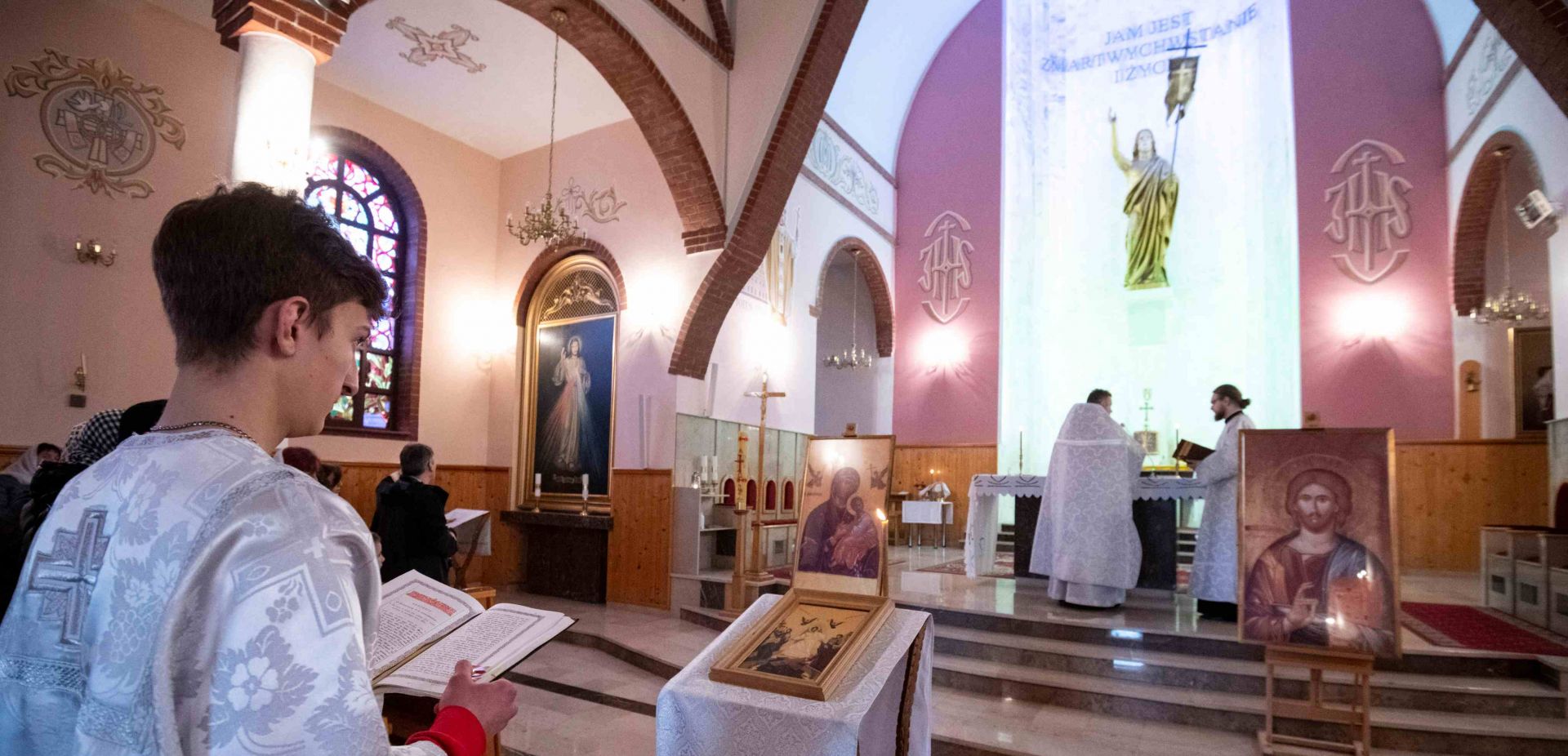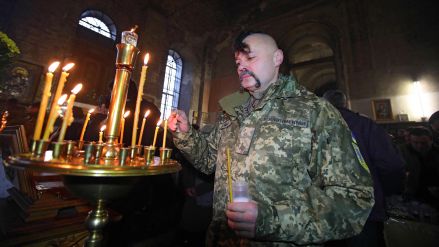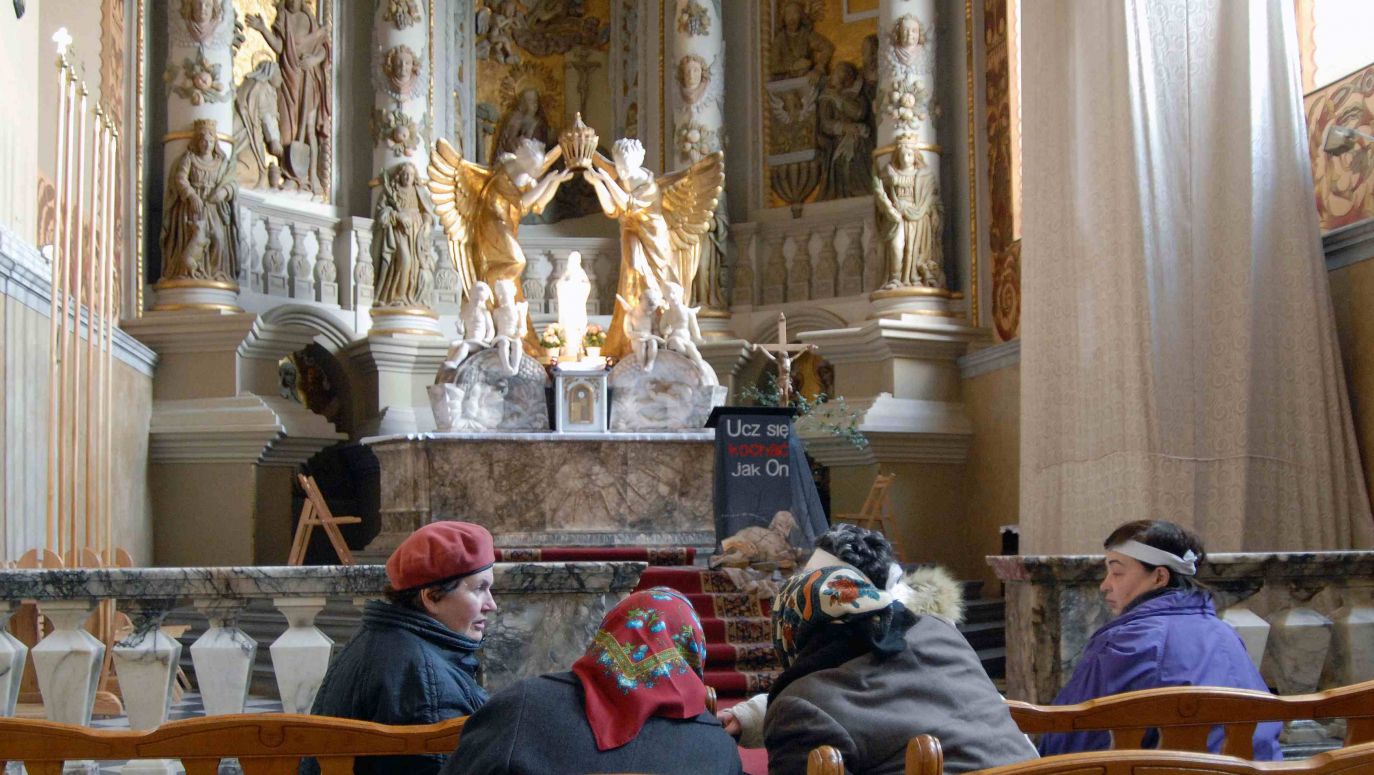And the new Ukrainian Church looks west rather than east. – We are open to dialogue with the Catholic Church and the Holy See – said Metropolitan Epiphanius in October last year. – We understand that time is needed for this, as the Holy See has had stable relations with the Russian Orthodox Church so far. Time is needed so that we can gradually build such relationships. In fact, they are already developing. For instance, through my (…) stay in Poland and meetings with Polish bishops. The visit of the delegation of the Polish episcopate in June this year was of great importance for building relations between our Church and the RC Church. in Kiev. And it was attended by the President of the Episcopate, Abp. Stanisław Gądecki, the Primate of Poland – Abp. Wojciech Polak, and the Metropolitan of Lublin, Abp. Stanisław Budzik, he added. And he emphasized: “In Ukraine, we have very good and friendly relations with both the RC and GC Churches”.
The symbol of the pro-Western attitude of the new Church is the decision that on September 1 it will officially switch to the new style, i.e. the Gregorian calendar. This was decided by the Council of Bishops of the OCU at its meeting in Kiev on 24 May, approving the information presented by Metropolitan Epiphanius the day before at the meeting of the Holy Synod of this Church.
What dialogue?
All this means that a new opportunity for Polish-Ukrainian dialogue has emerged. Indeed; the presidents and leading politicians of both countries have been running it for years and have repeatedly asserted historic reconciliation. Unfortunately, this was not necessarily reflected in the mood and behaviour of societies. The widespread Polish support for the “Orange Revolution” (2004-2005) melted away because there was no one to turn it into lasting cooperation. More or less the same happened with sympathy for the Maidan – the Revolution of Dignity in Ukraine (2013-2014).
Now, the Poles are supporting Ukrainian resistance against the Russian invasion, and the Ukrainians are grateful for the help they received, which can be seen, for example, in opinion polls – Poland enjoys great sympathy in Ukraine. Also in this case, it is difficult to say whether this agreement can be permanent (especially since history still divides us). But if it comes to the cooperation of religious institutions, which after all have a considerable impact on societies, this may change.
Without overestimating the role of the churches, it should be said that the message coming from the “pulpit” – figuratively speaking – may have much greater resonance in the societies of both countries than the official positions of politicians. If, for example, the Catholic, Greek Catholic and Orthodox hierarchies engage in reconciliation over a common, painful history, average citizens will perceive it differently than even the best and thrilling speeches of the presidents of both countries. Because they will hear about it from their priests, in their churches, and not from the media. And it seems that the Polish and Ukrainian bishops have already understood this.
– Piotr Kościński
– Translated by Dominik Szczęsny-Kostanecki
TVP WEEKLY. Editorial team and jornalists

 SIGN UP TO OUR PAGE
SIGN UP TO OUR PAGE
 And once again, “Roman” Catholics gave a helping hand. In the pastoral letter for Great Lent the Archbishop Stanisław Budzik, ordinary of Lublin, announced the handing over of St Josaphat’s Church in Zielona Street in Lublin to the Greek Catholics. In his letter, the Archbishop drew attention to the fact that there are numerous churches in the city centre so sharing one of them wouldn’t hinder the liturgy for the faithful, while it could help the 30-year-old GC parish in Lublin to solve pastoral problems.
And once again, “Roman” Catholics gave a helping hand. In the pastoral letter for Great Lent the Archbishop Stanisław Budzik, ordinary of Lublin, announced the handing over of St Josaphat’s Church in Zielona Street in Lublin to the Greek Catholics. In his letter, the Archbishop drew attention to the fact that there are numerous churches in the city centre so sharing one of them wouldn’t hinder the liturgy for the faithful, while it could help the 30-year-old GC parish in Lublin to solve pastoral problems.






